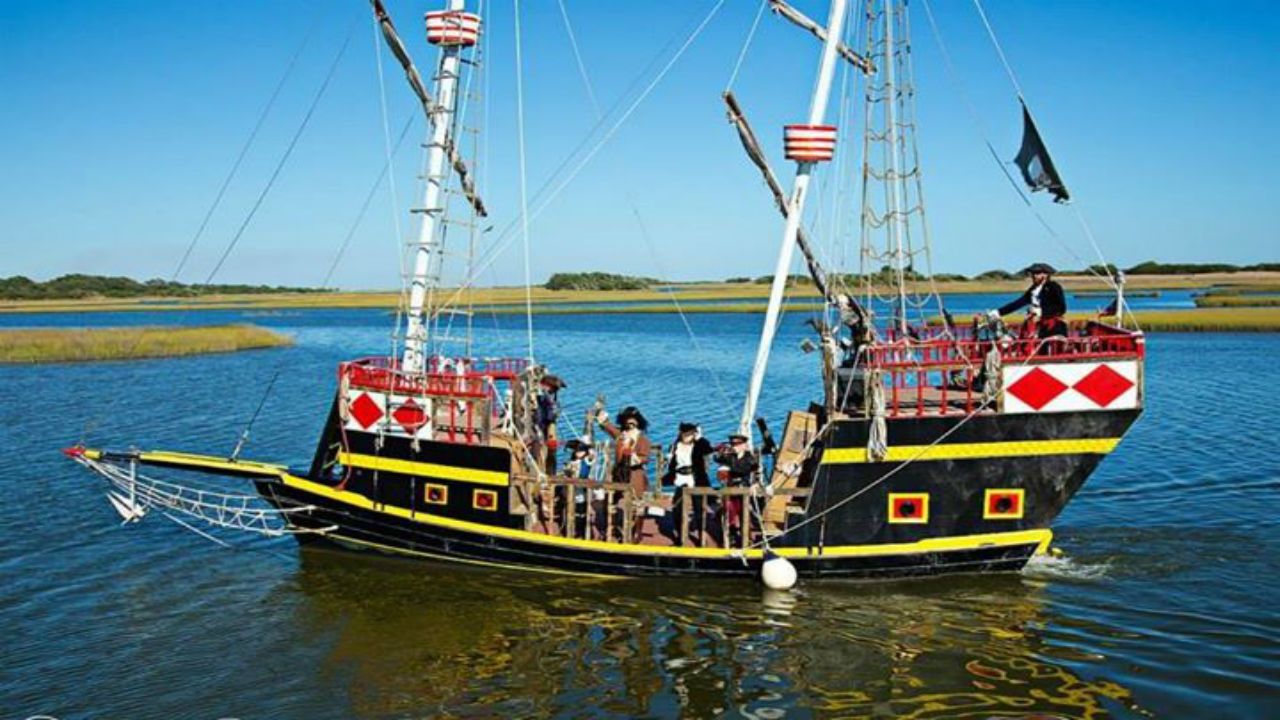TAMPA, Fla. — Since 1904, crowds have gathered in downtown Tampa for Gasparilla, a celebration featuring a mock invasion of the city to honor the memory of the legendary pirate, José Gaspar.
But although the Tampa Bay community pays homage to Gaspar, who was he and did he actually exist?
What You Need To Know
- The city of Tampa celebrates the memory of pirate José Gaspar, but there are many conflicting stories about his legacy
- Historians have looked into records of Gaspar's existence, but no proof has yet to be found
- Despite the mystery surrounding Gaspar, his story is used for many community events in Tampa Bay
- Gasparilla 2023: The pirate party master list
According to Floridian folklore, Gaspar was a fearsome pirate that operated out of a secret base in southwest Florida in the late 18th and early 19th centuries. Nicknamed "the last of the Buccaneers," Gaspar and his band of mercenaries terrorized the Gulf of Mexico, taking other ships as prizes and amassing large riches. His reign lasted up to late 1821 before dying in battle against the U.S. Navy.
Historians, however, have uncovered slightly different accounts into the tale.
Some versions of the story say Gaspar started out as a troubled adolescent who kidnapped a young girl for ransom. He was eventually captured and was given the option of going to prison or joining the navy. Gaspar chose the latter, serving with distinction for several years before leading mutiny against a tyrannical captain and escaping to Florida with a stolen ship.
Another version states Gaspar being a nobleman who rose through the ranks of the Spanish Royal Navy and became a councilor to King Charles III of Spain. He was well-liked in court, but when he abandoned one lover for another, the lover falsely accused him of stealing the crown jewels. When he was wrongfully arrested, he hijacked a ship and fled, promising to seek revenge on his homeland.
All of the story's retellings end similarly — after almost four decades of pirating, Gaspar decides to retire with his crew in southwest Florida in 1821 and splits his treasures with his crew. During the distribution, a crew member spots a British merchant ship sailing nearby. Wanting to take one last prize, Gaspar and his crew head out to sea to pursue the ship, but then finds out that it's a U.S. Navy ship, the USS Enterprise, hunting pirates in disguise. The navy overpowers Gaspar and his crew and instead of surrendering, Gaspar wraps an anchor chain around his waist, shouting, "Gasparilla dies by his own hand, not the enemy's," before jumping off the ship and into the waters of the Gulf of Mexico.
Upon closer investigation, historians have found no evidence that the pirate José Gaspar ever actually existed. According to Spanish archives, American ship logs, court documents and newspapers, there is no mention of the names "Gaspar" or "Gasparilla" in record. While the USS Enterprise did exist and was assigned to the southwest region tasked with suppressing piracy in the Caribbean, it is documented to have been in Cuba in December 1821, not in what is now known as Charlotte Harbor, Fla., where Gaspar's last battle is said to have taken place.
The first recorded reference of José Gaspar was over 100 years after his supposed career in an early 1900s promotional brochure for the Gasparilla Inn on Gasparilla Island in Charlotte Harbor, but the author stated that the work was fiction with no genuine facts in it.
Despite the validity of Gaspar's existence, the city of Tampa became inspired by the tale, and organizers created a Gasparilla-themed festival in 1904. After receiving an enormous positive response, the organizers founded Ye Mystic Krewe of Gasparilla (YMKG) to run the festivities.
In 2004, YMKG published a centennial history document of the organization that recounts the Gasparilla legend when it was first published, but adds a coda which concedes that scholarly research conducted in both Spanish and American archives has not uncovered any evidence of Gaspar's existence. The history concludes with this statement:
"Whether Gasparilla, the pirate, actually existed or not is a moot point. The legend exists, and that's what matters. The story of Gasparilla and his pirates has lent a certain flair of mystery and adventure to Florida's West Coast since the late 1800s. And on that legend, Ye Mystic Krewe of Gasparilla was founded 100 years ago."
Today, the story of José Gaspar is used to inspire many events around the Tampa Bay area and has become a staple within the community. Over the years, Gasparilla has grown to be one of the largest parades in the U.S.








